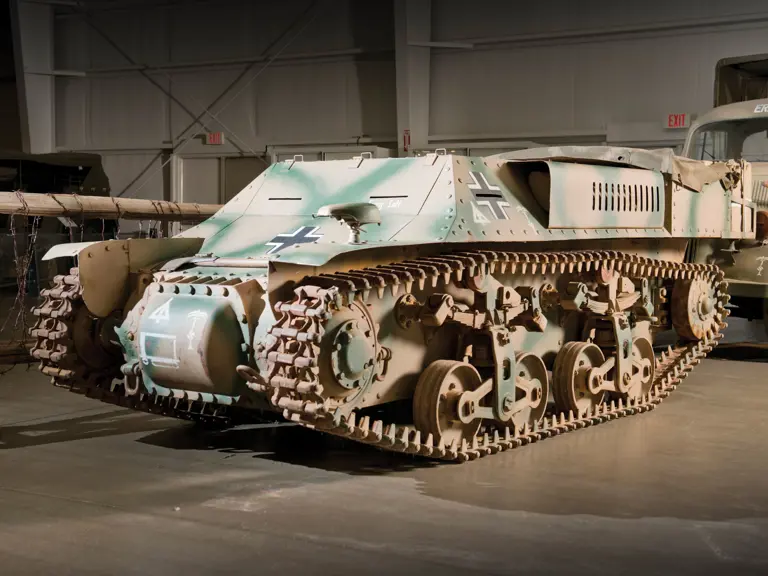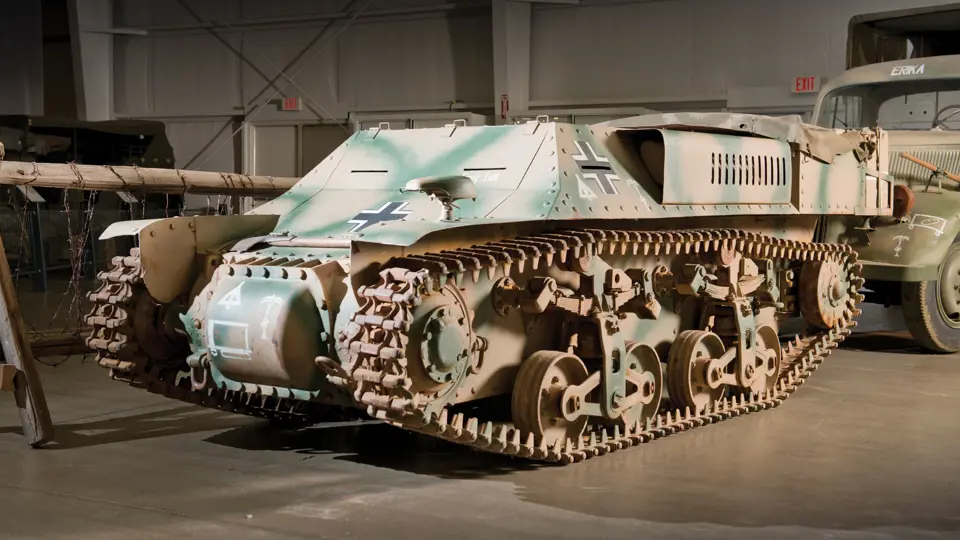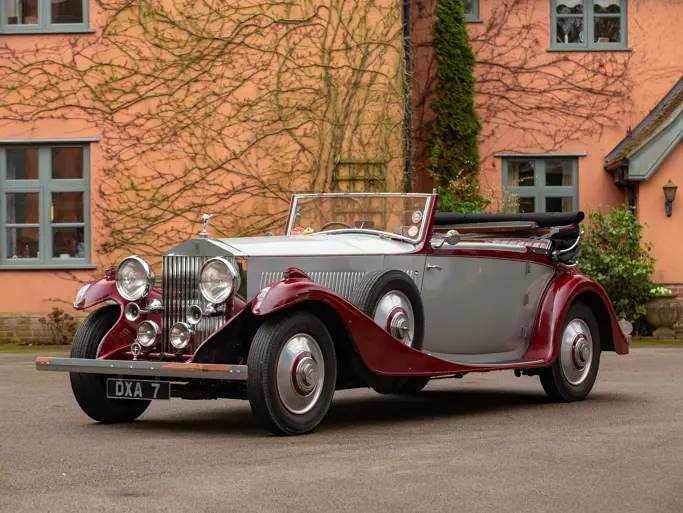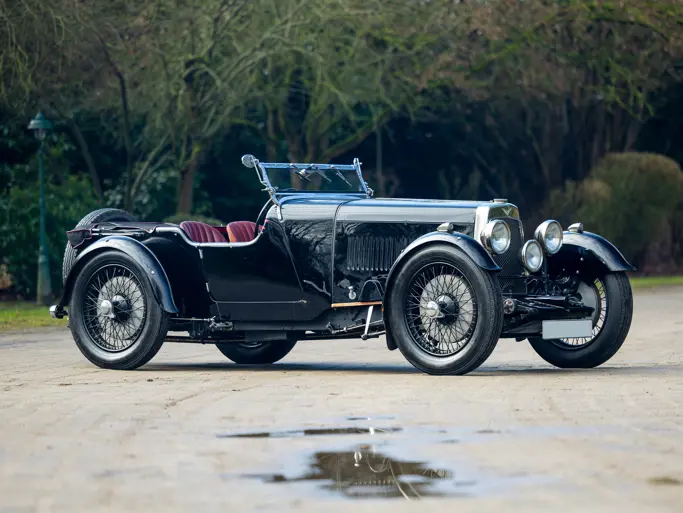Please Note: Information regarding these museum display vehicles was provided by the National Military History Center and has not been independently verified by Auctions America by RM ("AA"). As such, AA does not verify, warrant or guarantee any of this information. Prior inspection and research by the buyer is highly encouraged and recommended.
ATTENTION: Buyers are responsible for securing transportation and moving/loading of lots. Lot may be left on display indefinitely in the museum free of charge with a signed loan agreement form. Lots are sold as is, where is.
Please note this is being sold on "Bill of Sale" only.
Manufacturer: Lorraine Motors, Argenteuil (Seine et Oise)
Production Year: 1937
Engine: Delahaye 103TT ohv, 3.5-liter, 70-hp, liquid-cooled, six-cylinder, gasoline
Length: 14-feet, 1-inch
Width: 5-feet, 4-inches
Height: 4-feet, 1-1/2-inches
Weight: Approximately 5.6-tons
Armor: Front: 12-mm; sides and rear: 9-mm; top: 6-mm; bottom: 5-mm
Armament: NONE on this example - Many, in German service, were converted to 7.5-cm, 10.5-cm and 15-cm self-propelled gun mounts
Maximum Road Speed: Approximately 20-mph
Crew: Two
Markings: German Afrika Korps, 15th Panzer Division
The Lorraine 37L armored cargo carrier began production in 1937 and 387 units were completed by the time of the German invasion of France in 1940. Designated Transporteur de Ravitaillement (Supply and Ammunition Vehicle Tractor) in French service, the Lorraine 37L was designed to provide ammunition and supplies, under fire, to front-line combat units. Initially, the Lorraine carriers were used by the German Army, as displayed, in the same capacity as the French and were designated Lorraine Schlep-per (f) SdKfz 135. In 1941, it was decided to convert a small number of the Lorraine Schleppers by adding a French 4.7-cm anti-tank gun on a pedestal-mount in the rear stowage compartment. The only other modification was the addition of ammunition racks. In May 1942 an order was given to convert most of the remaining Lorraines to self-propelled artillery and Panzerjaegers (tank-hunters). Hitler specifically ordered 40 of the Lorraines to be modified with the addition of the sFH13/1 15-cm howitzer and sent to Rommel’s Afrika Korps in North Africa. A few of the Lorraines were converted to 10.5-cm leFH18 howitzer mounts, but the Panzerjaeger 7.5-cm Pak 40/1 anti-tank gun conversion was the most numerous with 170 units built. This example is not fitted with armament.



 | Auburn, Indiana
| Auburn, Indiana


